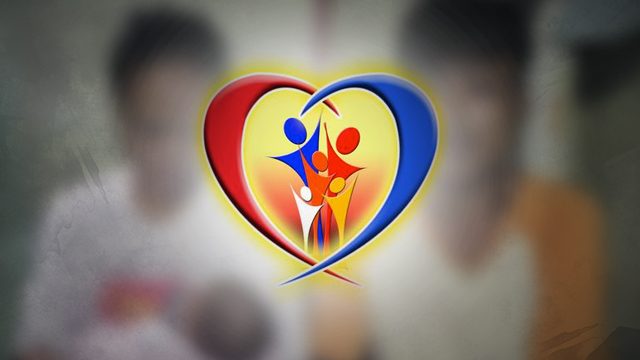SUMMARY
This is AI generated summarization, which may have errors. For context, always refer to the full article.

MANILA, Philippines – In January, President Benigno Aquino III lauded the gains of his administration’s flagship anti-poverty program, saying 1.5 million families under the Pantawid Pamilyang Pilipino Program (4Ps) have been lifted from poverty since 2010.
But the challenge remains for the government, as 67,968 family-beneficiaries from those yanked out of poverty are still considered “vulnerable” or “transient poor” – at risk of reverting to poverty in the event of an economic shock or a disaster.
“Given the number of natural disasters that hit the country in recent years, the DSWD recognizes the need to extend assistance to these families to keep them from becoming poor again,” Social Welfare Secretary Corazon “Dinky” Soliman said on Tuesday, April 5.
The Department of Social Welfare and Development (DSWD) launched on Tuesday the results of its second round of household assessment for the National Household Targeting System for Poverty Reduction (Listahanan 2).
The information system identifies the poorest households in the Philippines and their locations.
Through Listahanan 2, the DSWD learned that a total of 1,511,320 Pantawid beneficiaries have transitioned to non-poor status. This is 36% of the total 4.2 million active Pantawid beneficiaries.
“[There is] improvement of well-being. Malaking hamon na kailangang ituloy ang pagtulong sa mahihirap na pamilya para sa ganoon, tuloy-tuloy ang pag-ahon,” Soliman said.
(There is improvement of well-being. It’s a big challenge for us to continue assisting poor families so their progress continues.)
About 5.1 million poor households were identified during the second round of assessment, which covered 15.1 million households. This translates to 5.5 million targeted poor families or 28.7 million individuals.
Of the 15.1 million households covered by Listahanan 2, DSWD identified 880,978 households or 983,816 families as “transient poor.”
Government, international organizations, as well as civil society organizations use the Listahanan data for their poverty-reduction programs. DSWD, for instance, uses the data for the 4Ps or the Conditional Cash Transfer program.
The second round of assessment, conducted in 2015 and covered families in all rural areas, not only identified who the poor are and where they are located but also identified the characteristics of their barangays (villages).
Dennis Mapa, dean of the School of Statistics of the University of the Philippines-Diliman said: “Where you are is a strong determinant if you are poor or non-poor. If you live in an area with no access to water, electricity, and a road network, those are characteristics that there are many poor households in that area.”
Listahanan – an initiative lauded both by the World Bank and the United Nations Children’s Fund – allows the government to “focus its resources to those who need it the most,” said Soliman.
It is also seen as an effective tool to remove political patronage in the country.
“[Listahanan is] important because it really empowers families. They know they were chosen because of their situation and their right to be served by the government. Not because the barangay captain, the mayor, the congressman, the governor, or the senator wrote a letter to include them in the program,” Soliman explained.
The results of Listahanan 2 comes less than a month after the National Economic and Development Authority reported poverty incidence in the Philippines eased to a “record low” of 26.3% in the first semester of 2015 – the lowest since 2006.
But a January poll revealed half of Filipino families considered themselves poor in 2015. – Rappler.com
Add a comment
How does this make you feel?
There are no comments yet. Add your comment to start the conversation.